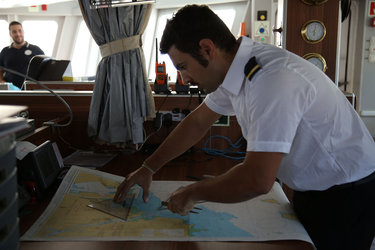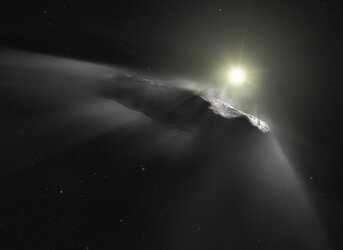Accept all cookies Accept only essential cookies See our Cookie Notice

About ESA
The European Space Agency (ESA) is Europe’s gateway to space. Its mission is to shape the development of Europe’s space capability and ensure that investment in space continues to deliver benefits to the citizens of Europe and the world.
Highlights
ESA - United space in Europe
This is ESA ESA facts Member States & Cooperating States Funding Director General Top management For Member State Delegations European vision European Space Policy ESA & EU Space Councils Responsibility & Sustainability Annual Report Calendar of meetings Corporate newsEstablishments & sites
ESA Headquarters ESA ESTEC ESA ESOC ESA ESRIN ESA EAC ESA ESAC Europe's Spaceport ESA ESEC ESA ECSAT Brussels Office Washington OfficeWorking with ESA
Business with ESA ESA Commercialisation Gateway Law at ESA Careers Cyber resilience at ESA IT at ESA Newsroom Partnerships Merchandising Licence Education Open Space Innovation Platform Integrity and Reporting Administrative Tribunal Health and SafetyMore about ESA
History ESA Historical Archives Exhibitions Publications Art & Culture ESA Merchandise Kids Diversity ESA Brand CentreLatest
Space in Member States
Find out more about space activities in our 23 Member States, and understand how ESA works together with their national agencies, institutions and organisations.
Science & Exploration
Exploring our Solar System and unlocking the secrets of the Universe
Go to topicAstronauts
Missions
Juice Euclid Webb Solar Orbiter BepiColombo Gaia ExoMars Cheops Exoplanet missions More missionsActivities
International Space Station Orion service module Gateway Concordia Caves & Pangaea BenefitsLatest
Space Safety
Protecting life and infrastructure on Earth and in orbit
Go to topicAsteroids
Asteroids and Planetary Defence Asteroid danger explained Flyeye telescope: asteroid detection Hera mission: asteroid deflection Near-Earth Object Coordination CentreSpace junk
About space debris Space debris by the numbers Space Environment Report In space refuelling, refurbishing and removingSafety from space
Clean Space ecodesign Zero Debris Technologies Space for Earth Supporting Sustainable DevelopmentLatest
Applications
Using space to benefit citizens and meet future challenges on Earth
Go to topicObserving the Earth
Observing the Earth Future EO Copernicus Meteorology Space for our climate Satellite missionsCommercialisation
ESA Commercialisation Gateway Open Space Innovation Platform Business Incubation ESA Space SolutionsLatest
Enabling & Support
Making space accessible and developing the technologies for the future
Go to topicBuilding missions
Space Engineering and Technology Test centre Laboratories Concurrent Design Facility Preparing for the future Shaping the Future Discovery and Preparation Advanced Concepts TeamSpace transportation
Space Transportation Ariane Vega Space Rider Future space transportation Boost! Europe's Spaceport Launches from Europe's Spaceport from 2012Latest

Spaceship to ship: where IXV will call home
Thank you for liking
You have already liked this page, you can only like it once!
A view of the marine tracking station antenna on the recovery ship, Nos Aries, now in the Pacific Ocean readying for next week’s crucial IXV mission.
The ship will support the 100-minute flight of IXV, which will test crucial new European reentry technologies. IXV is set for liftoff at 13:00 GMT on 11 February.
Following the ballistic phase, reentry – IXV’s most critical phase – will start at 120 km altitude, when the craft’s aerodynamic ‘lifting body’ shape slices into the atmosphere at 27 000 km/h, which mimics a spacecraft returning from a typical low-orbit mission.
This is when ground teams in Europe and on the ship will be most anxious, as nothing will have been heard from the wingless spaceplane since before the start of reentry.
Reentry starts about 64 minutes into flight and lasts about 20 minutes. During reentry, the thermal protection on the underbody will be exposed to temperatures of around 1700ºC – hot enough to melt nickel.
Meanwhile, in the Pacific Ocean, slightly north of the equator and about 25 km from the target splashdown spot near 3°N / 123°W, the antenna on the Nos Aries will be pointing at IXV’s expected trajectory and listening for ‘AOS’ – acquisition of signal. Hearing it will indicate that reentry has gone well.
Experts from the Agency's Estrack ground station network will be on the ship to support the crucial tracking activity.
More about ESA's tracking station network
Follow IXV on Twitter @esa_ixv
-
CREDIT
ESA–T. Javidi -
LICENCE
ESA Standard Licence

Nos Aries ship heading for the Pacific Ocean

Nos Aries ship heading for the Pacific Ocean

Nos Aries ship heading for the Pacific Ocean

Nos Aries ship heading for the Pacific Ocean















 Germany
Germany
 Austria
Austria
 Belgium
Belgium
 Denmark
Denmark
 Spain
Spain
 Estonia
Estonia
 Finland
Finland
 France
France
 Greece
Greece
 Hungary
Hungary
 Ireland
Ireland
 Italy
Italy
 Luxembourg
Luxembourg
 Norway
Norway
 The Netherlands
The Netherlands
 Poland
Poland
 Portugal
Portugal
 Czechia
Czechia
 Romania
Romania
 United Kingdom
United Kingdom
 Slovenia
Slovenia
 Sweden
Sweden
 Switzerland
Switzerland
























